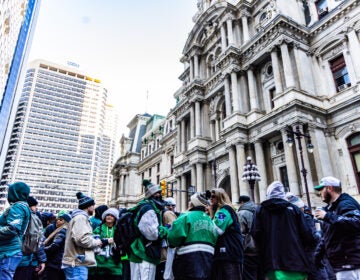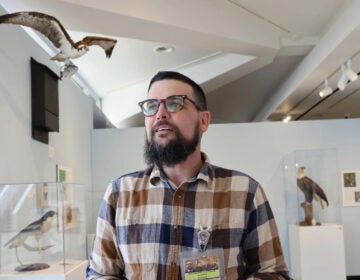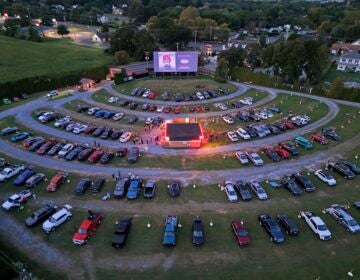Philly museum offers reflections of Jewish urban life
There aren’t any showstoppers in “Jewish Artists In America: 1925 – 1945,” now on view at the National Museum of American Jewish History in Philadelphia.
Few visitors are likely to recognize the 21 artists whose works are in the museum’s underground concourse gallery.
The show comprises selections from the collection of Steven Wasser, a Massachusetts manufacturer of musical instruments, mostly flutes and piccolos. For 10 years he has been collecting social-realist art of the Depression era, painted by Jewish artists.
Instead of images of gleeful parochialism, the exhibition has “One Summer Night” (1942), a small lithograph showing New Yorkers sitting lazily on a tenement rooftop.
“When I see the summer rooftop scene portrayed by … [Saul Kovner], I am reminded of the stories my mother told me of sleeping on the roof of her Bronx tenement during hot summer nights,” wrote Wasser in the thin exhibition “cataloguette.” His grandparents immigrated from Poland and Hungary.
Wasser collected only secular art, preferable made via President Franklin Roosevelt’s Works Progress Administration programs, that he could buy on reasonable budget. The show, contained on one, long wall, is broken into three parts: urban life, labor (or lack of), and domestic scenes.
“The subjects of the paintings Steven collected are not particularly Jewish,” said curator Josh Perelman. “They’re a Jewish lens on mostly urban life in the era between the World Wars. What characterizes them is that all the painters were immigrants, or children of immigrants. So it is their view on the city, on working life, and on private life.”
Although focused on a bleak period in American history — hopeless soup kitchen lines, violently striking dockworkers — many of the images are bright and hopeful. Street markets are painted in yellows, oranges, and pale blues. A young woman in a smart hat applies makeup at a vanity. Wasser writes that an exhausted waitress at the end of her shift reminds him of his red-headed grandmother.
“The work is uplifting,” said associate curator Claire Pingel. “There are a few bleak moments — the image of a soup line is not a happy one. But there are also images of people getting back to work. There’s a 1942 image of a man working on a machine, by Edith Kramer. It shows ourselves getting back to work.”
The exhibition complements another exhibition, “Beyond Swastika and Jim Crow,” high up on the museum’s top floor. Its artifacts and multimedia displays tell the story of Jewish scholars who fled Nazi Germany during World War II to teach in black colleges of the American South.
Editor’s Note: In a previous version of this story, the artist of the lithograph “One Summer Night” was misidentified. Saul Kovner is the artist who printed “One Summer Night.”
WHYY is your source for fact-based, in-depth journalism and information. As a nonprofit organization, we rely on financial support from readers like you. Please give today.




